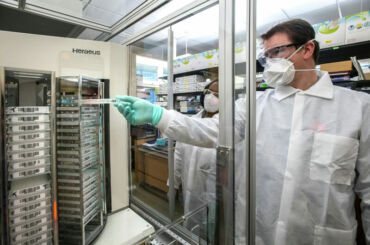Assuring excellence in pharmaceutical production consists of rigorous quality assurance, adherence to regulatory standards and Good Manufacturing Practices (GMPs). Essential too are quality control, efficient process validation, and thorough risk management. With technological advancements, approaches are continually evolving, sparking debates on effectiveness and adaptation speed. Data integrity and continuous improvement ensue, while root cause analysis provides insight into problem origins. Delving further, one can explore the complexities and nuances involved in excellence assurance within the pharmaceutical sector.
Understanding Quality Assurance in Pharmaceuticals
Although often overlooked, quality assurance in the pharmaceutical industry is a critical aspect to guarantee that medicines and drugs are manufactured, stored, and distributed, while upholding the highest standards of quality and safety. This sparks controversial discussions on its implementation and effectiveness. The role of quality assurance extends beyond the simple monitoring of drug production; it encompasses the totality of systems and processes that secure the consistent delivery of products that meet predefined quality criteria.
Pharmaceutical QA training is an essential component of quality assurance. It is a rigorous process that equips individuals with the knowledge and skills to implement QA techniques effectively. However, the efficacy of this training has been a point of contention. Critics argue that the dynamic nature of the pharmaceutical industry necessitates a more adaptable approach to training, one that evolves with technological advancements and industry trends.
This is where QA software solutions come into play. These digital platforms offer a more flexible and responsive approach to quality assurance. They allow for real-time monitoring and adjustment of production processes, thereby increasing efficiency and reducing the likelihood of errors. The adoption of such solutions, however, is not without controversy. Concerns are raised over their reliability, cost-effectiveness, and the potential for over-reliance on technology at the expense of human oversight.
Implementing Regulatory Standards
In the domain of pharmaceutical production, the application of regulatory standards is not a choice but a necessity.
While the intricacies of understanding these standards can be challenging, the consequences of non-compliance are even more serious, potentially jeopardizing product quality and patient safety.
In the following discussion, we will explore the key principles of understanding regulatory compliance and how to guarantee quality assurance through these standards.
Understanding Regulatory Compliance
Traversing the intricate maze of regulatory compliance is an important aspect of pharmaceutical production, as it guarantees adherence to rigorous standards and cultivates patient trust in the safety and effectiveness of the products.
The role of compliance training cannot be overstated. It equips personnel with the necessary knowledge to meet the stringent requirements set by regulatory bodies. However, it’s controversial that despite the resources poured into training, non-compliance issues still persist.
This raises questions about the effectiveness of such training programs and calls for a re-evaluation of their design and delivery. The pharmaceutical industry must aim for a deeper understanding of regulatory compliance, not merely for compliance sake, but as an integral part of their duty to deliver safe and effective products.
Ensuring Quality Assurance
Bridging the gap between regulatory compliance and actual production processes, Quality Assurance emerges as a critical element in the pharmaceutical industry, sparking debates over the best methods to implement regulatory standards effectively.
Amid these debates, pharma innovation becomes pivotal, offering transformative solutions to bolster patient safety. However, are these innovative strategies merely industry buzzwords? Or do they genuinely enhance the production process? It’s high time we scrutinize these strategies closely.
While regulatory compliance provides a framework, it’s the infusion of innovation into these standards that will truly elevate quality assurance. This, in turn, will guarantee better patient safety. Encouragingly, some forward-thinking firms are already pioneering this approach. But can these outliers become the norm? Only time will tell.
Importance of Good Manufacturing Practices
Undoubtedly, Good Manufacturing Practices (GMPs) serve as the cornerstone of pharmaceutical production, guaranteeing product quality, safety, and efficacy for the end-users. GMPs play a pivotal role in safeguarding the health of the consumer, and non-compliance can lead to severe consequences, including health risks and legal implications.
Product Traceability and Staff Training are two indispensable components of GMPs. Traceability allows for the tracking and monitoring of each stage of the production process, reducing the risk of errors and ensuring accountability. On the other hand, staff training is essential in maintaining the highest standards of production and in ensuring that all personnel are competent and capable of carrying out their duties effectively.
However, the value of GMPs extends beyond these elements. The table below provides a snapshot of some other key aspects:
| Elements of GMPs | Purpose | Impact |
|---|---|---|
| Quality Management | Ensures consistent quality | Reduces risk of substandard products |
| Documentation | Provides written procedures and instructions | Minimizes errors and improves traceability |
| Premises and Equipment | Ensures appropriate design and maintenance | Reduces risk of contamination and errors |
| Validation | Confirms that processes work effectively | Ensures consistent product quality |
Contrary to some viewpoints that GMPs are simply a bureaucratic burden, they are, in fact, a fundamental tool for control and excellence. They provide a roadmap for pharmaceutical manufacturers to follow, ensuring that products are consistently high quality, safe, and effective. Embracing GMPs is not only an obligation, but a strategic choice that guarantees consumer trust and business success.
Role of Quality Control in Pharmaceuticals
Integral to pharmaceutical production, Quality Control (QC) serves as the vigilant gatekeeper, rigorously scrutinizing every aspect of the manufacturing process to make certain that only the finest, safest, and most effective products reach the consumers. This is not merely a task to be checked off a list, but a thorough, ongoing commitment to the highest standards of excellence.
Quality control techniques are the backbone of this endeavor. These range from physical and chemical analysis, to biological testing, all designed to detect and eliminate any inconsistencies or contaminations that pose a risk to product quality. It is a meticulous, multi-layered process that leaves no stone unturned, ensuring that every batch of drugs is uniform in composition, potency, purity, and stability.
Pharmaceutical testing procedures are another integral part of the QC process. These include stringent tests for raw materials, in-process materials, and final products. The QC personnel conduct these tests with sophisticated equipment and methodologies, delivering results that are both accurate and reliable.
Yet, despite the rigorous QC, some argue there’s a glaring gap in the system. Detractors claim that it leans heavily on post-production testing, accordingly potentially missing early-stage errors. This has sparked heated debates in the industry, with some advocating for a more proactive, preventative approach in the QC process.
In the quest for pharmaceutical excellence, there is no room for complacency. The role of Quality Control is far from static; it must evolve in tandem with technological advancements and regulatory changes. The goal is to make sure that every pill, every capsule, and every injection not only meet but exceed the standards of quality and safety. The stakes are high, the responsibility immense, but the rewards of robust QC far-reaching.
Efficient Process Validation Methods
In the pursuit of ideal pharmaceutical manufacturing, efficient process validation methods emerge as the unsung heroes, guaranteeing that each production process consistently delivers quality and safety at every stage. However, the traditional validation approach, often deemed inflexible and time-consuming, is under scrutiny. It stands accused of hindering innovation and productivity in an industry where both are critical for success.
At the heart of modernizing this process lies validation protocol development. This systematic approach guarantees that the process performs effectively and consistently during routine production. It is a robust methodology that endows control and predictability, key desires of any pharmaceutical company. However, a word of caution; a poorly conceptualized validation protocol could lead to disastrous consequences, including regulatory non-compliance, product recalls, or worse, patient harm.
A critical step in this protocol is the validation report analysis. This thorough examination of the validation data is a make-or-break step, separating a successful validation from a failed one. The devil is indeed in the details. A meticulous analysis can uncover hidden inconsistencies, anomalies, and potential risks that could otherwise go unnoticed. Conversely, a cursory overview can lead to catastrophic oversights.
Risk Management in Pharmaceutical Production
Risk management in pharmaceutical production is a critical, yet often overlooked, component of industry excellence.
The identification of production risks and the implementation of effective mitigation strategies can mean the difference between success and catastrophe.
Despite this, contentious debates persist regarding the best methods for risk identification and prevention.
Identifying Production Risks
Understanding and addressing potential production risks is a paramount task in the pharmaceutical industry, one that demands rigorous strategies and innovative solutions. It is a complex process that requires the use of advanced Risk Identification Techniques to predict and manage Unforeseen Production Challenges.
- Risk Identification Techniques play an important role in detecting potential hazards that could derail production efficiency and product quality. These techniques range from Failure Mode and Effects Analysis (FMEA) to risk mapping.
- Unforeseen Production Challenges can include machine breakdowns, raw material shortages, or even human error. These uncertainties necessitate a proactive approach in risk management.
- The ability to forecast and manage risks before they become problems is essential. This requires not just predictive analytics but also a culture of continuous improvement and learning.
Implementing Mitigation Strategies
Moving beyond the identification of potential production hazards, the implementation of mitigation strategies is an essential step towards ensuring the robustness of the pharmaceutical production process. These measures are not simply a matter of vital practice, but a key weapon in the battle against unforeseen circumstances that could jeopardize production capabilities.
Workforce Training becomes a linchpin, empowering employees to not only identify risks but to effectively counteract them. Controversially, this is often overlooked, with companies preferring to rely on automated systems. However, the value of a trained human eye cannot be underestimated.
Contingency Planning, another critical facet, allows for swift, decisive action during crises. The absence of a viable contingency plan can lead to disastrous consequences, underscoring its importance in risk management.
Auditing and Inspection in Pharma Industry
In the intricate world of pharmaceuticals, the pivotal role of auditing and inspection cannot be overstated, as this process guarantees the industry’s compliance with rigorous standards, regulations, and quality controls. In maintaining the integrity of pharmaceutical production, the focus on audit preparation and meticulous inspection procedures is of paramount importance.
The pharmaceutical industry is under perpetual scrutiny, and it is essential to prepare for audits and inspections thoroughly and efficiently. A well-prepared audit can effectively identify potential gaps in compliance, ensure continued adherence to quality standards, and markedly reduce the risk of regulatory actions.
Here are three critical aspects to take into account:
- Audit Preparation: This involves thorough planning, including a review of previous audits, identifying potential non-compliance areas, and assembling all necessary documentation. The goal is not simply to pass the audit but to foster an environment of continuous improvement.
- Inspection Procedures: The inspection is more than a mere formality. It is a rigorous process designed to identify any deviations from established regulations. Inspections should be thorough, systematic, and based on a well-defined checklist to make sure no element is overlooked.
- Post-Audit Actions: It’s not enough to just prepare and conduct audits. Any non-compliance identified during the audit should be addressed promptly. This includes implementing corrective actions, re-training staff, and modifying processes, as necessary.
The journey towards excellence in pharmaceutical production is fraught with challenges. However, with diligent auditing and inspection, these challenges can be converted into opportunities for improvement and growth. The ultimate goal is not just compliance but the assurance of delivering safe, effective, and high-quality pharmaceutical products.
Data Integrity and Record Management
Amid the intricate landscape of pharmaceutical production, the significance of data integrity and record management emerges as a cornerstone for operational excellence, shaping not just regulatory compliance but also the trajectory of innovation and improvement within the industry.
The pharmaceutical sector is awash with a staggering volume of sensitive data, making it a prime target for cyber threats. Hence, the robustness of data encryption techniques employed plays a pivotal role in fortifying data integrity. It is no longer an option but a mandate to embed sophisticated encryption algorithms within the system architecture to guarantee that data, both at rest and in transit, remains impervious to breaches.
The impact of cybersecurity in this scenario cannot be overemphasized. A single cyber-attack can not only jeopardize the company’s reputation but can also result in monumental financial losses and regulatory sanctions. As such, a holistic cybersecurity framework, deeply integrated into the data management strategy, is not a luxury but a necessity.
However, it is not just about warding off external threats. Internal breaches, often resulting from human errors or deliberate sabotage, are equally harmful. Hence, a thorough record management system is vital to monitor, control, and audit data access and modifications.
The controversy lies in balancing the need for data accessibility for innovation and process improvement, against the need for stringent data security measures. It is a delicate equilibrium to maintain, yet the industry cannot afford to compromise on either end.
Continuous Improvement in Quality Assurance
Aiming for perfection, yet accepting the reality of imperfection, pharmaceutical companies have turned to continuous improvement in quality assurance as a strategic weapon to cut through the competition and maintain operational excellence. This commitment to excellence is not only aesthetic; it directly impacts the efficacy of drugs, patient safety, and the reputation of the company. The principle of continuous improvement is a potent tool, driving organizations to relentlessly question their methods, reassess their quality metrics, and aim for better.
- Incorporating quality metrics: Metrics act as a compass, guiding the process of continuous improvement. They provide quantifiable data that measure the effectiveness and efficiency of processes, thereby enabling companies to identify areas where improvement is needed.
- Root cause analysis: A powerful technique in the arsenal of quality assurance, root cause analysis allows companies to dig deep into problems, identifying their origins to prevent recurrence. It’s an elemental component of continuous improvement, focusing not on symptoms, but on the disease.
- Re-evaluation and adjustment: This involves regular review and adjustment of quality metrics and processes based on the outcomes of root cause analysis. It ensures that the improvement process is truly ongoing and not merely a one-time effort.
The implementation of continuous improvement in quality assurance is not without its challenges. It demands an investment of time, resources, and a shift in organizational culture. However, the payoffs are immense. Not only does it lead to better quality products, but also fosters an environment of innovation, adaptability, and resilience. The pursuit of continuous improvement is, indeed, the pursuit of excellence.
Conclusion
To summarize, guaranteeing excellence in pharmaceutical production processes is a multifaceted endeavor. It requires a thorough understanding of quality assurance, strict regulatory standards, effective risk management, and continuous improvement.
Through meticulous auditing, inspection, and data management, pharmaceutical industries can validate their procedures, uphold good manufacturing practices, and maintain the highest level of product quality, thereby safeguarding public health and trust.




